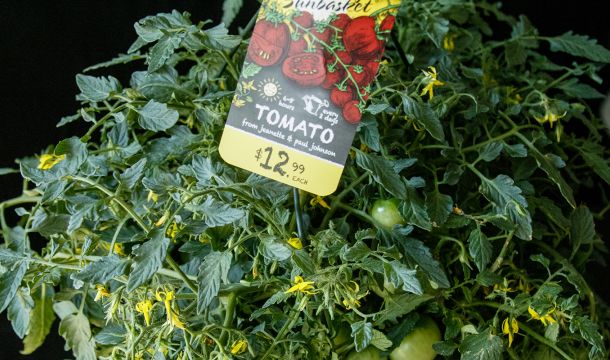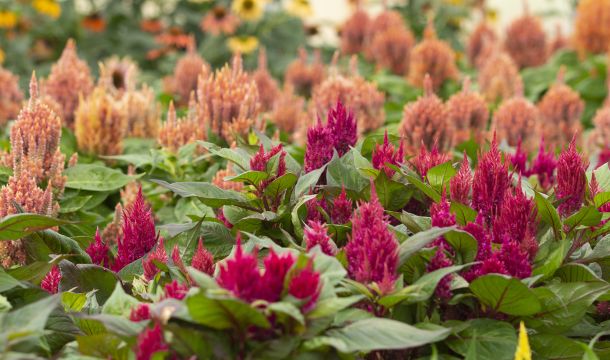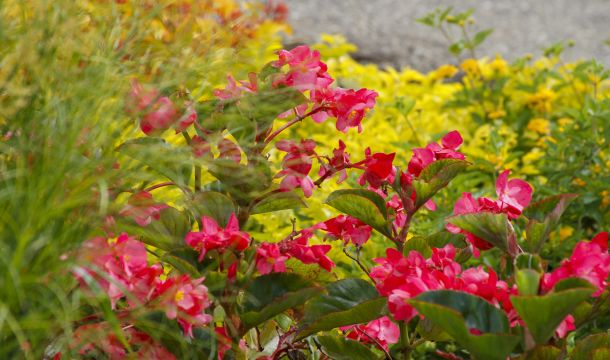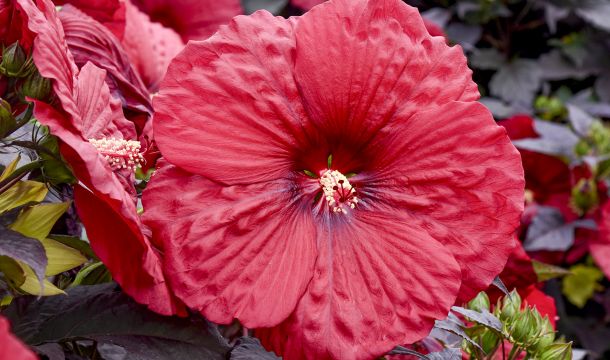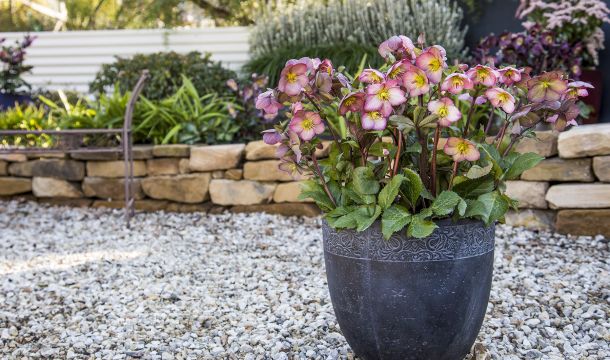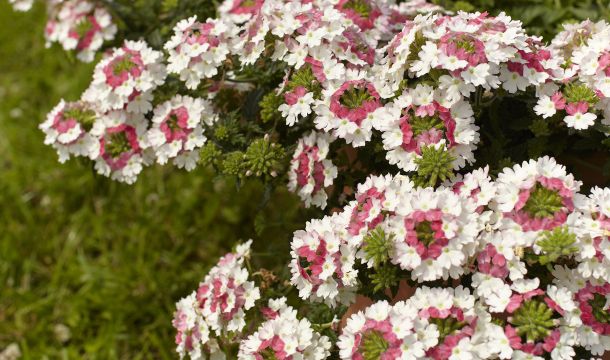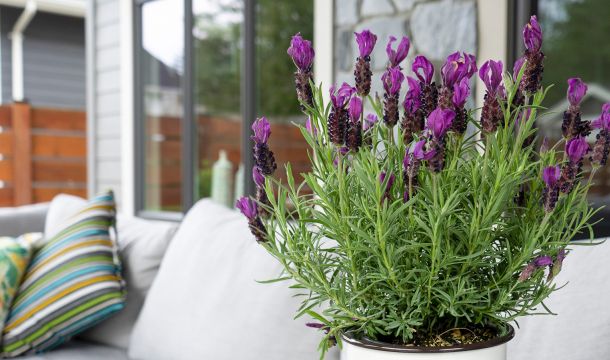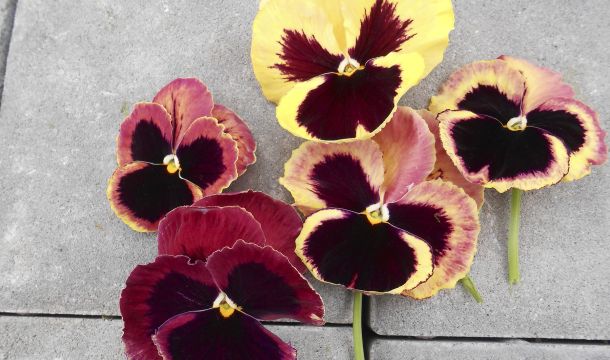Hula: The Wide-Bodied Wax Begonia

Spreading is one of those rubber words capable of stretching across different products. Spreading in a petunia is not like spreading in a pansy or in a begonia—[record scratch]—wait. Wax begonias are shaped like gum drops or corn muffins. How exactly do they spread?
Width is the significant feature here. According to the Dutch breeders at PanAmerican, the Hula crown grows outward more than upward. It branches laterally. As it rises, the crown sends out even more lateral branches on top of the layer underneath it. This results in lots of strength to hold its shape internally and lots of end tips for the frothy wax begonia flowers.
The technique creates an arching basket-shaped habit. A Hula might have the height of a Super Olympia, but it covers the growing media with the girth of a MegaWatt. In dimensions, that’s about 8 to 10 inches high and about 20 to 26 inches wide. Instead of corn muffins, Hulas look more like apple fritters when viewed from the side: high centers sloping to thick, well-defined edges.
Hulas are best served as premium baskets. They have several key features needed by large-diameter containers: a reasonable overhang with height, a sense of volume in the center, and heavy color coverage.
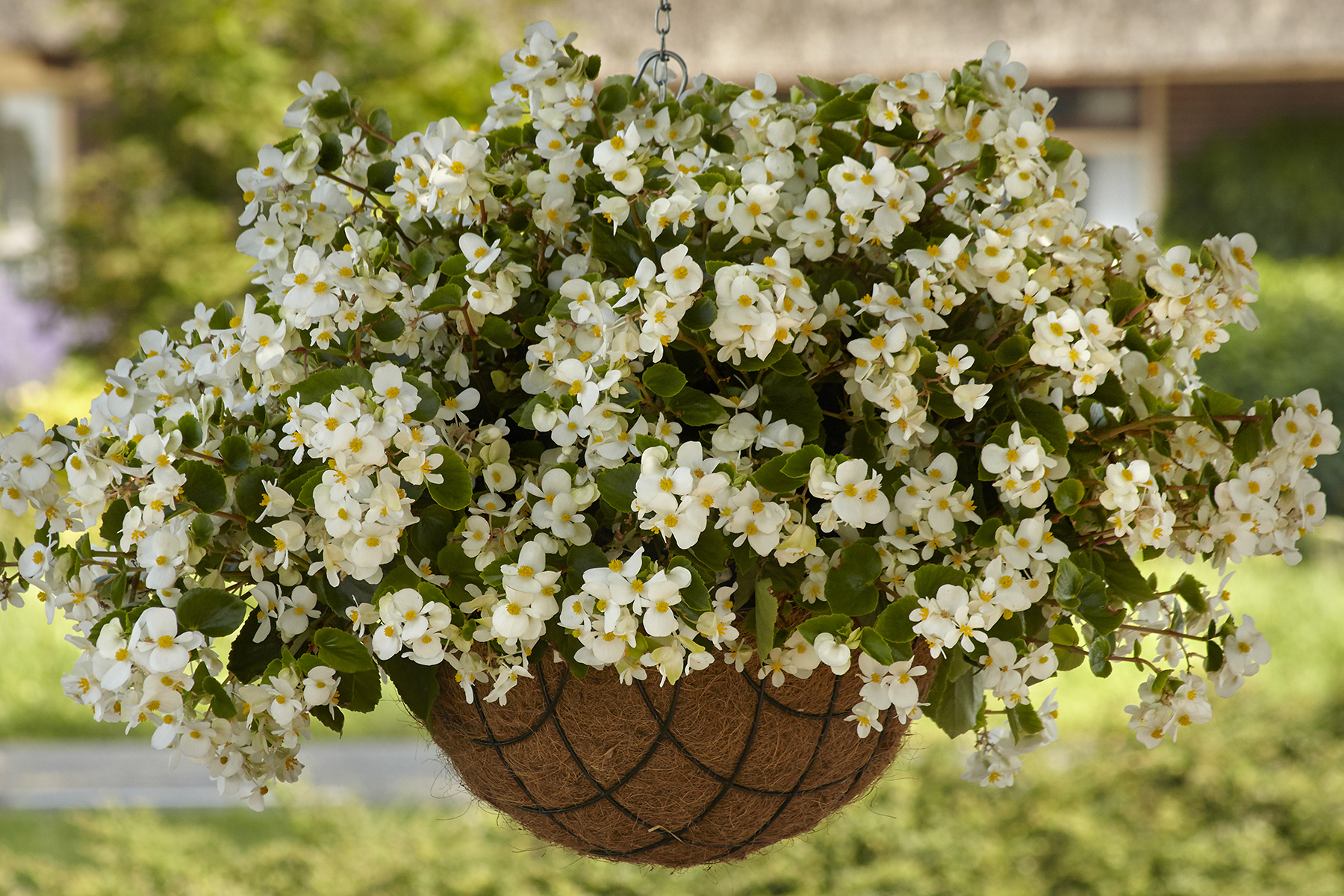
Begonia Hula White
Bringing Premium to Begonia Baskets
Hula’s shining moments come as inputs to containers with large diameters, from 14 inches up to 20 inches. These plants bring strength along with their beauty. Think of Cultivate. Do you want your outdoor containers, surrounded by a sea of hot concrete, flagging in front of this audience? I see begonias in the urns all the time.
In July, 4:00pm brings hydration issues. Super humid air encourages disease. High nighttime temperatures mess with flower formation. Hulas shrug all this off while covering the media underneath. Lots of commercial venues need this kind of iron-clad beauty: zoos, parks, hotels, stadiums, plazas, and so forth.
The canopy on the Hulas is lush but reasonably open to work other material among the foliage. Not only does this give designers a range of presentation choices, but the internal begonia strength functions as a scaffold to support the entire display.
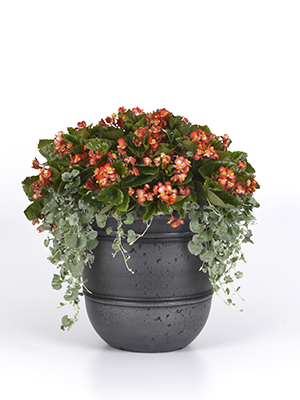 |
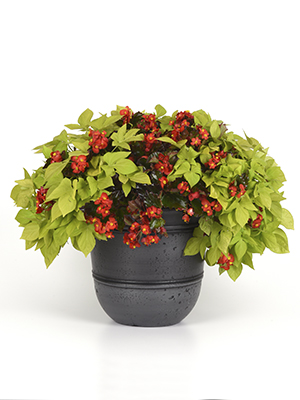 |
 |
| 'Hula Bicolor' with Dicondra | 'Hula Red' with Ipomoea | 'Hula Red' with Salvia |
Hulas function as filler in mixed containers. The inputs bulk up with extra material to hang over the edges, but the canopy is open enough to allow salvias to rise, ipomoeas to chill, or dicondras to hang. Hulas lend their internal strength as a scaffold to support other material. Just for the record, all wax begonias can do this, but Hulas look good in a basket while doing it.
Some of the best examples of Hula baskets can be found in the photography at Raker Trial Gardens. These are big overhanging baskets with the classic wax begonia look. Tap through the dates and you can see the product’s ability to last into autumn. Part of a premium promise is the ability to last longer than a few weeks.
Hula also has begonia’s knack for lasting all season in flower. Wax begonias don’t really notice the mishandling after sale, the widely variable watering schedule, or the full sun or full shade where they are placed. These are premium basket features that Hula supplies by its very nature. The difference? Hulas look effortless in a basket, like they belong.
The biggest color variations occur in the white. Pure white is brand new this year. Blush is white to nearly white on the front; the stain is heavier on the back. The Bicolor Red and White has high contrast and very little pink in the transition. It comes across as Red + White on the plant.
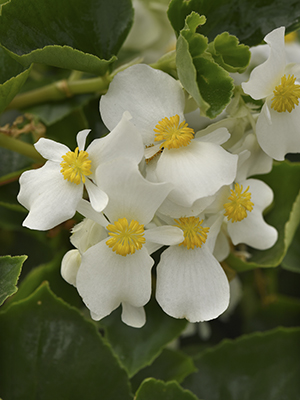 |
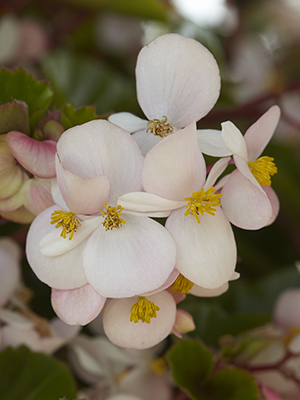 |
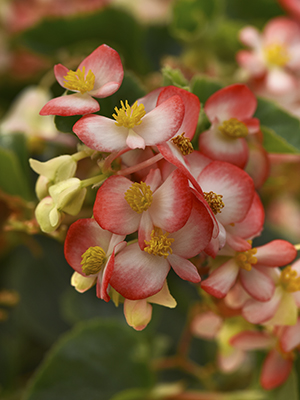 |
| 'Hula White' | 'Hula Blush' | 'Hula Bicolor Red and White' |
A Very Young Series
Over the decades, waxes have built up assumptions around their relentless sameness. Hulas are too young for that. They‘ve worked the industry for only three years, so they have quirks.
Toasting The Red: Technically, Hula is strictly a green-leaf series—no bronze is sold. If you grow the plants in a greenhouse, this is true; however, if you set a basket of red outside and let it toast in the full sun (like you would Vertigo, Black Pearl, or Caramel), the foliage develops that rich bronzy begonia glow. White doesn’t do this; pink does this a little, but the red loves a good tan. For green and bronze foliage contrast, opt for the mix.
White Is New This Year: In previous years, blush was the lightest choice. Blush is nearly white, but it has faint stains of pink on the backs of the flowers. White is fully white, both sides, but blush remains in the lineup.
Color Coverage And Vigor: Hula colors still have their personalities—the nature of each one is slightly different in the vigor of the plant, the density of floral coverage over the top, or the neatness around the natural shag of its shape. Testing one color shows about 95% of what the other ones will do.
Daylight Neutral: Some waxes are, some are not. Hulas don’t depend on day length to trigger their flowers. If you want to push begonia blooms earlier into the calendar but your current series struggles to open up, Hulas could work as a solution.
Bicolor Red & White / Red & White Mix: Bicolor offers flowers of red & white—no pinks here. Mix offers two plants, one red and one white. The two colors are exactly the same, so it sets up an interesting contrast. Which is better? The answer comes down to color size. If you like your chocolate in little sprinkles, go with the bicolor. If you like your color in fudgy chunks, go with the mix.
The most surprising feature is the Toasting of the Reds. The Hulas are sold as a green leaf series, and they ship that way from the greenhouse. However, leave a basket of Red in the sun and the foliage turns bronzy.
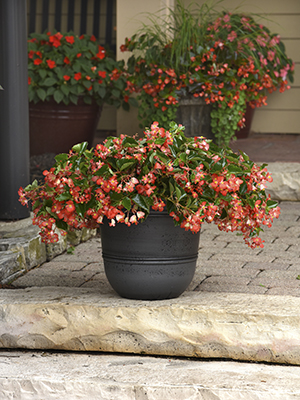 |
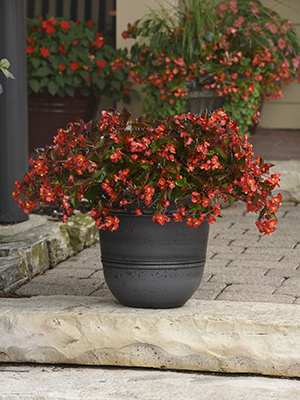 |
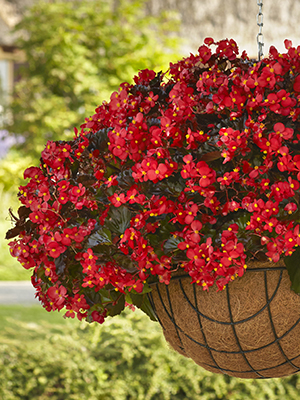 |
| 'Bicolor Red & White' (no bronze) | 'Red' (bronze) | 'Red' (basket close-up) |
Popular Articles
